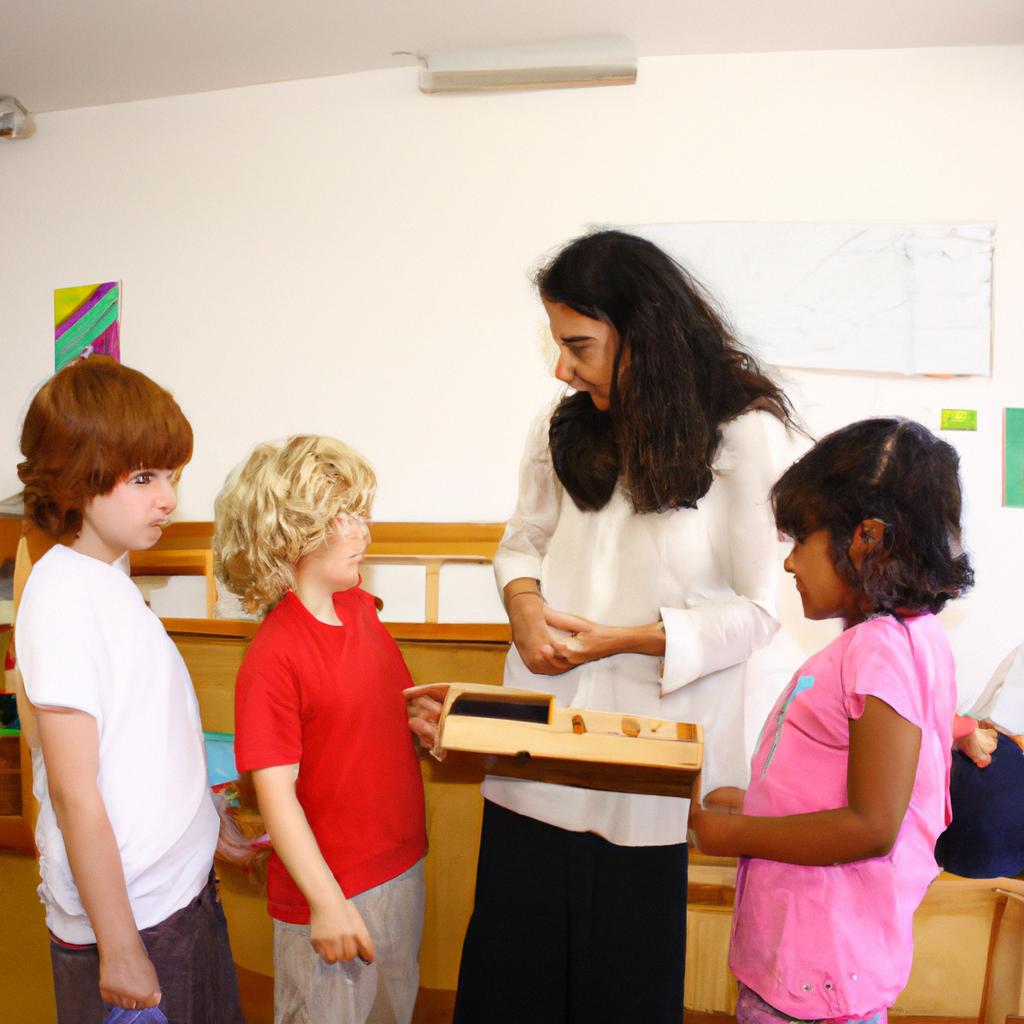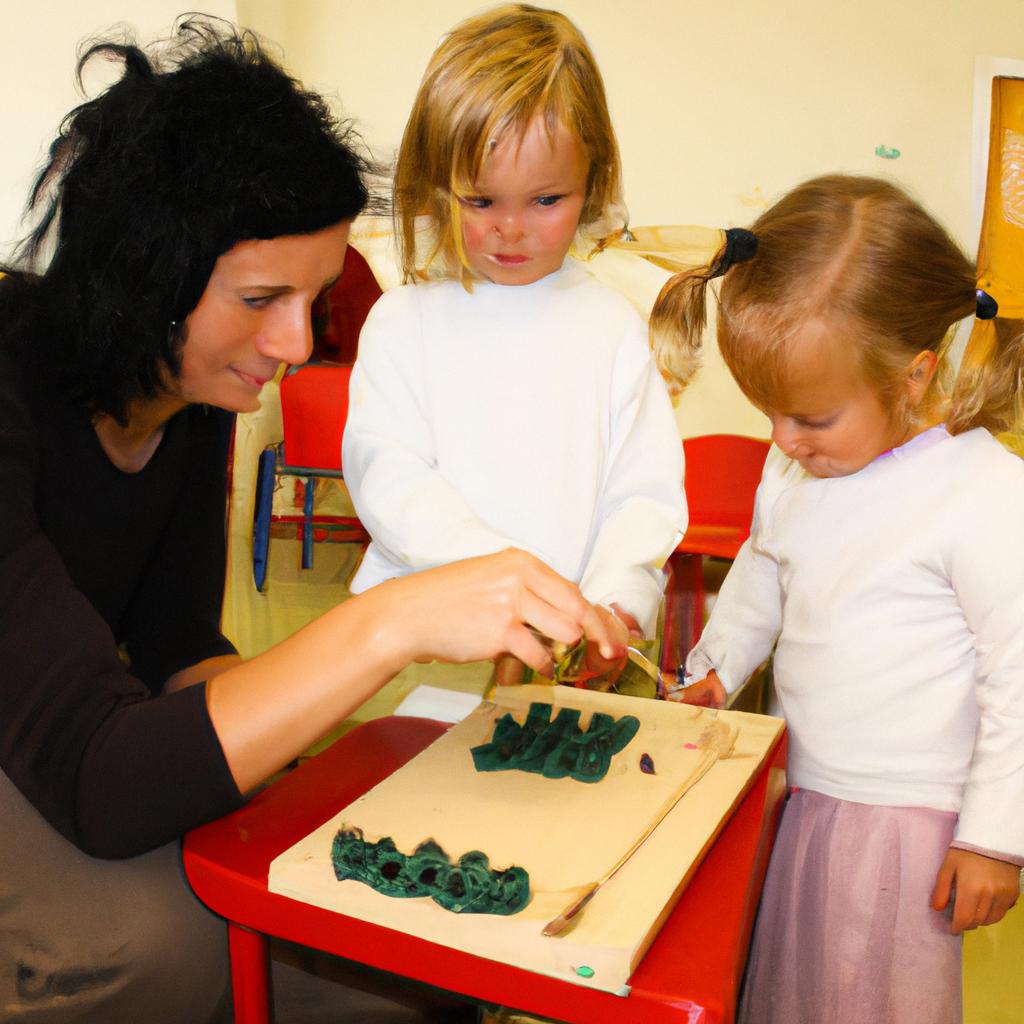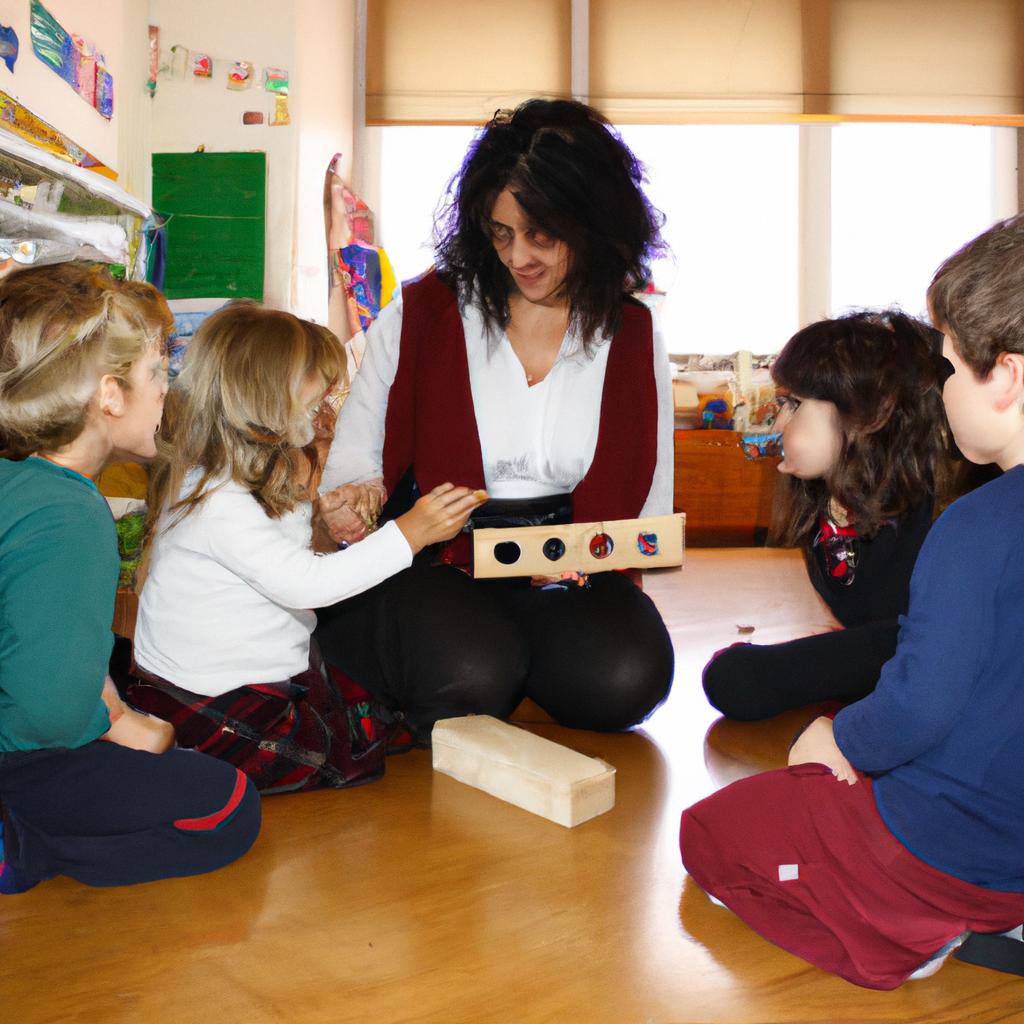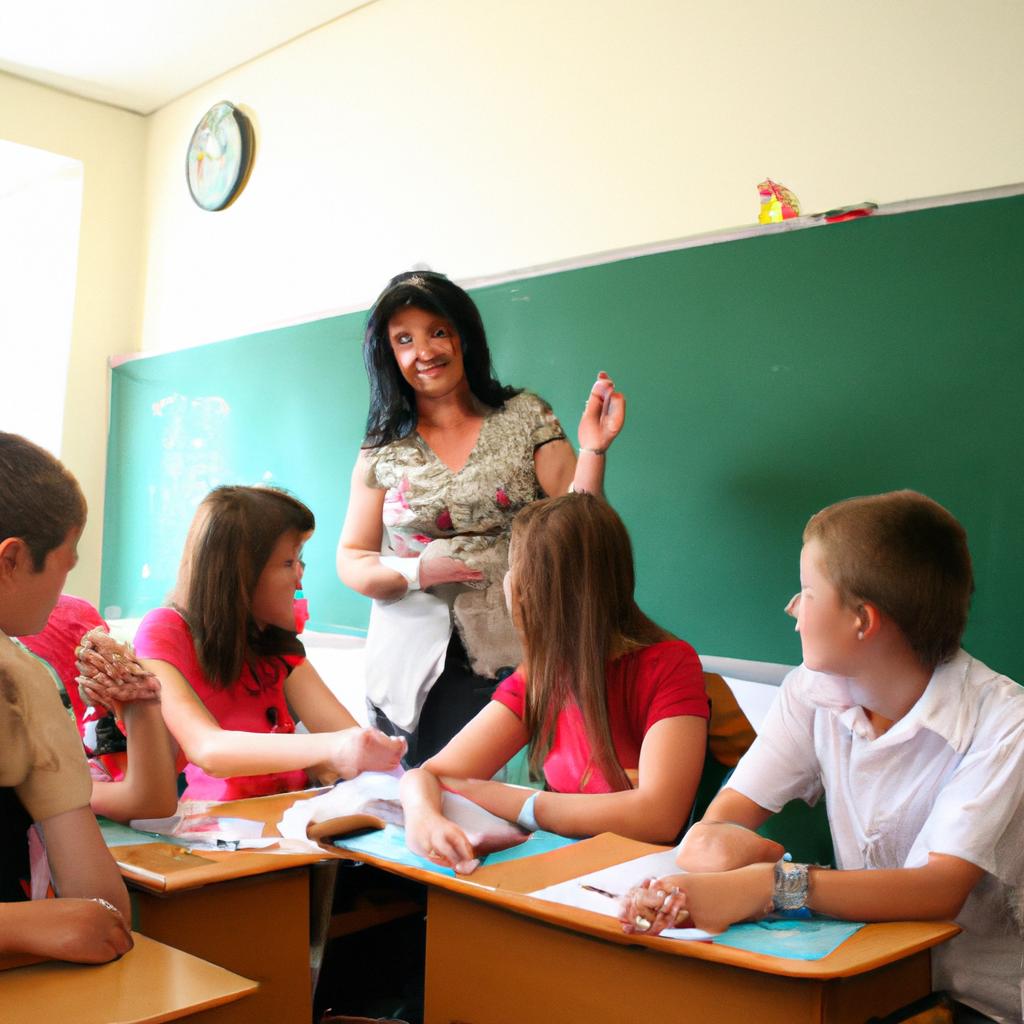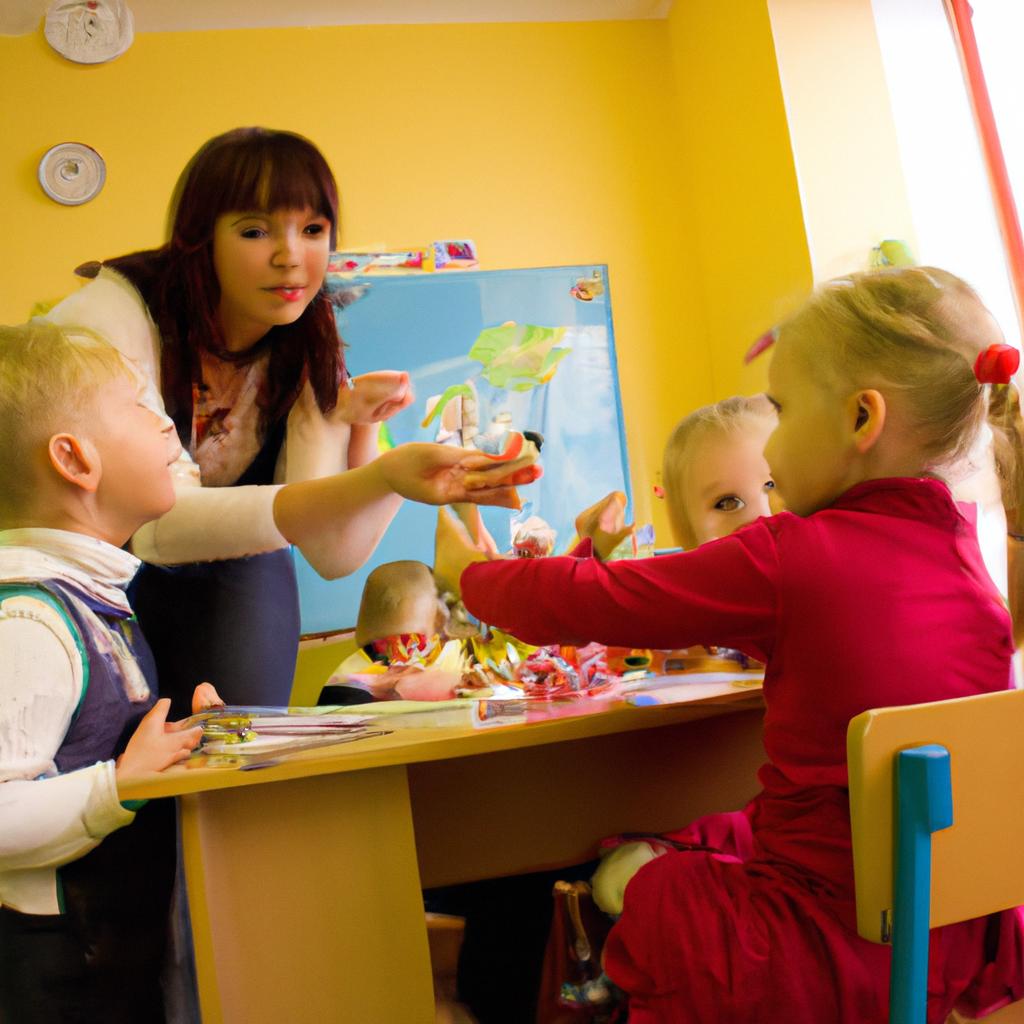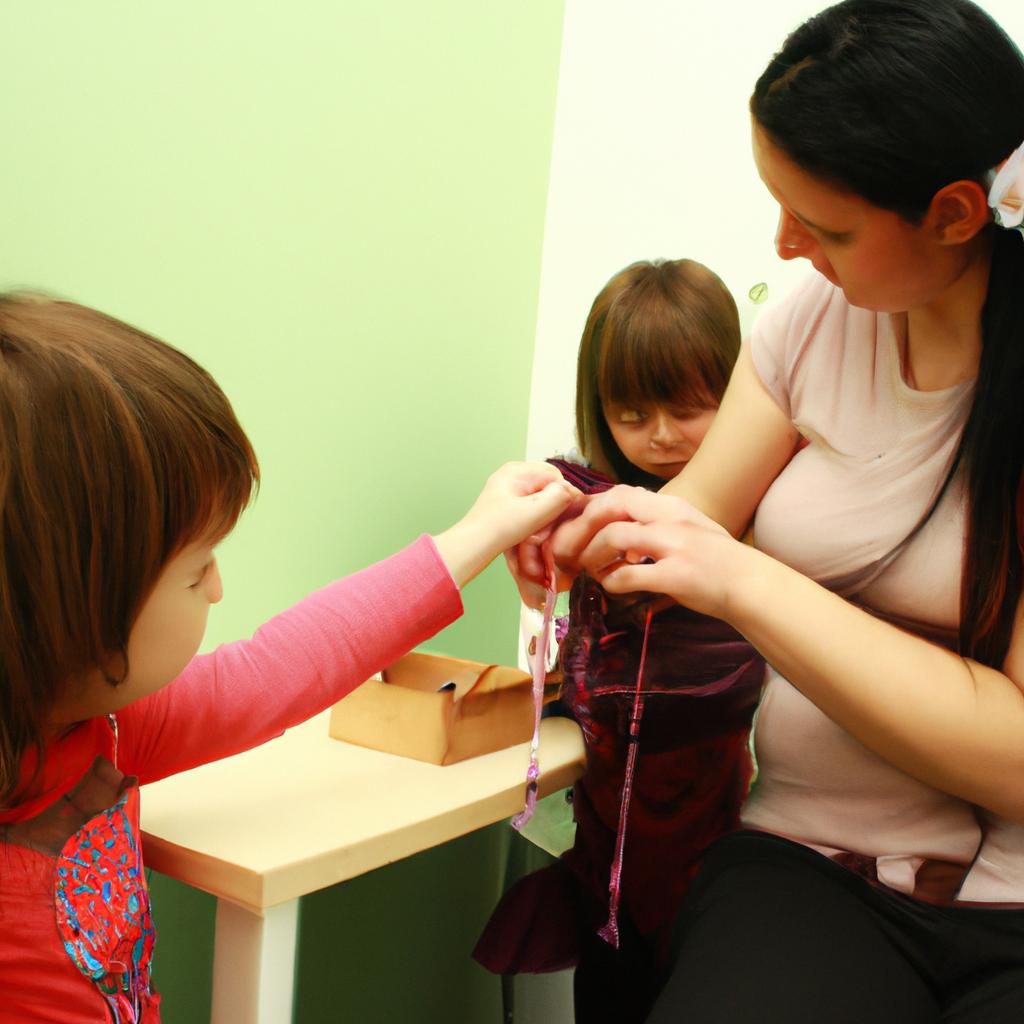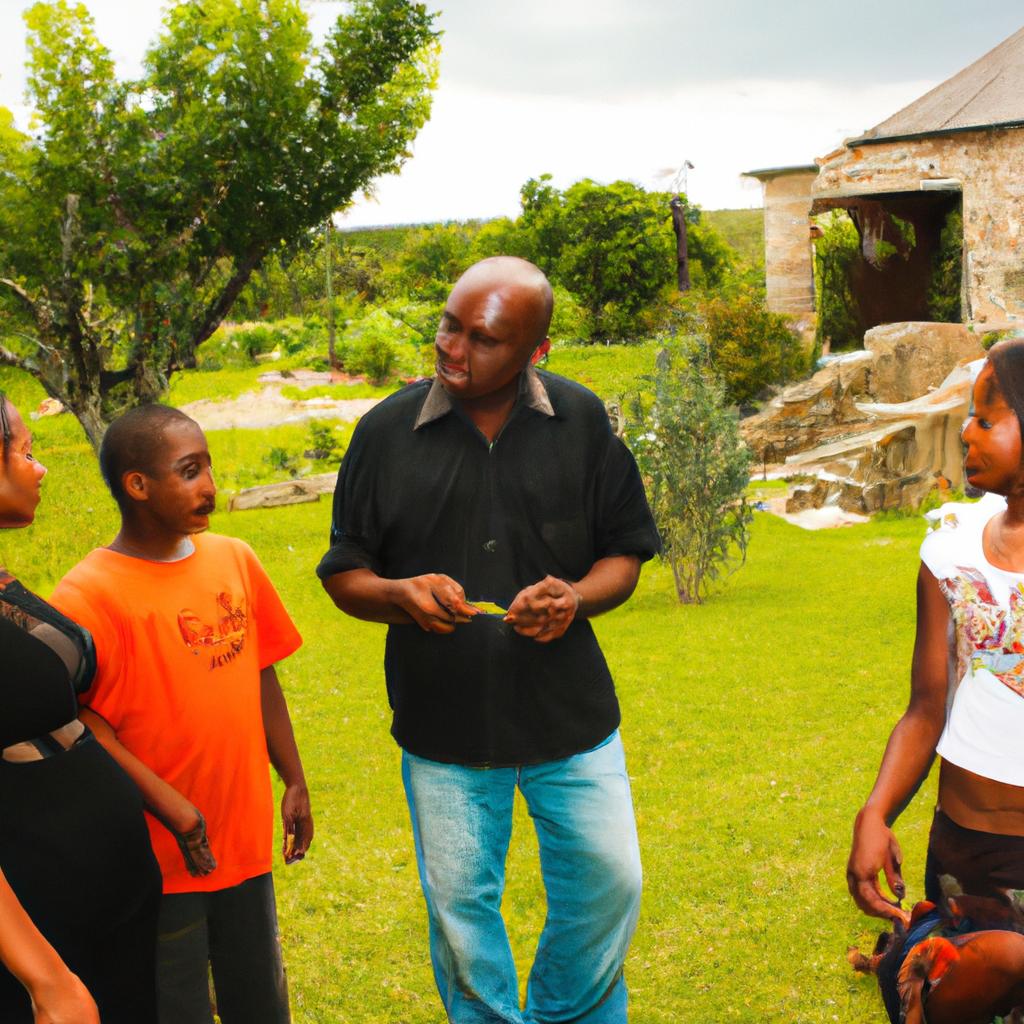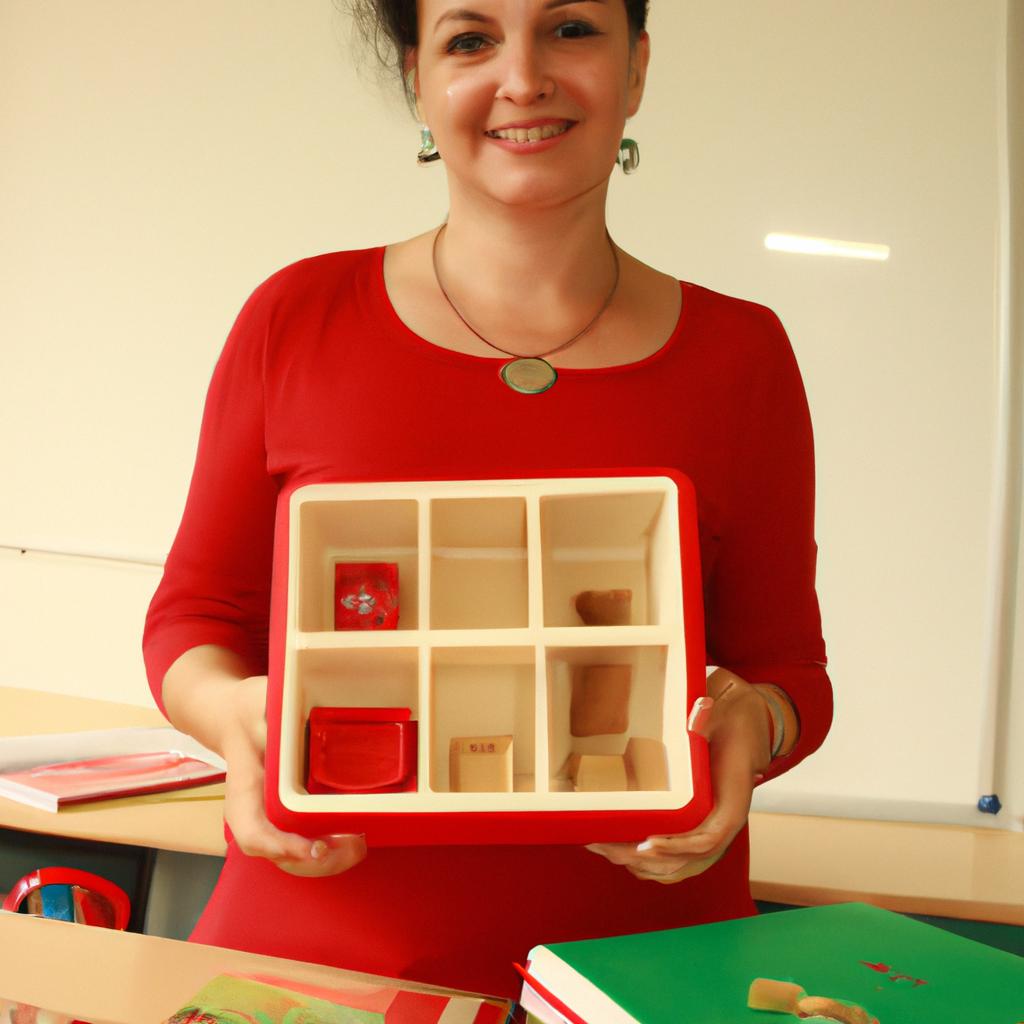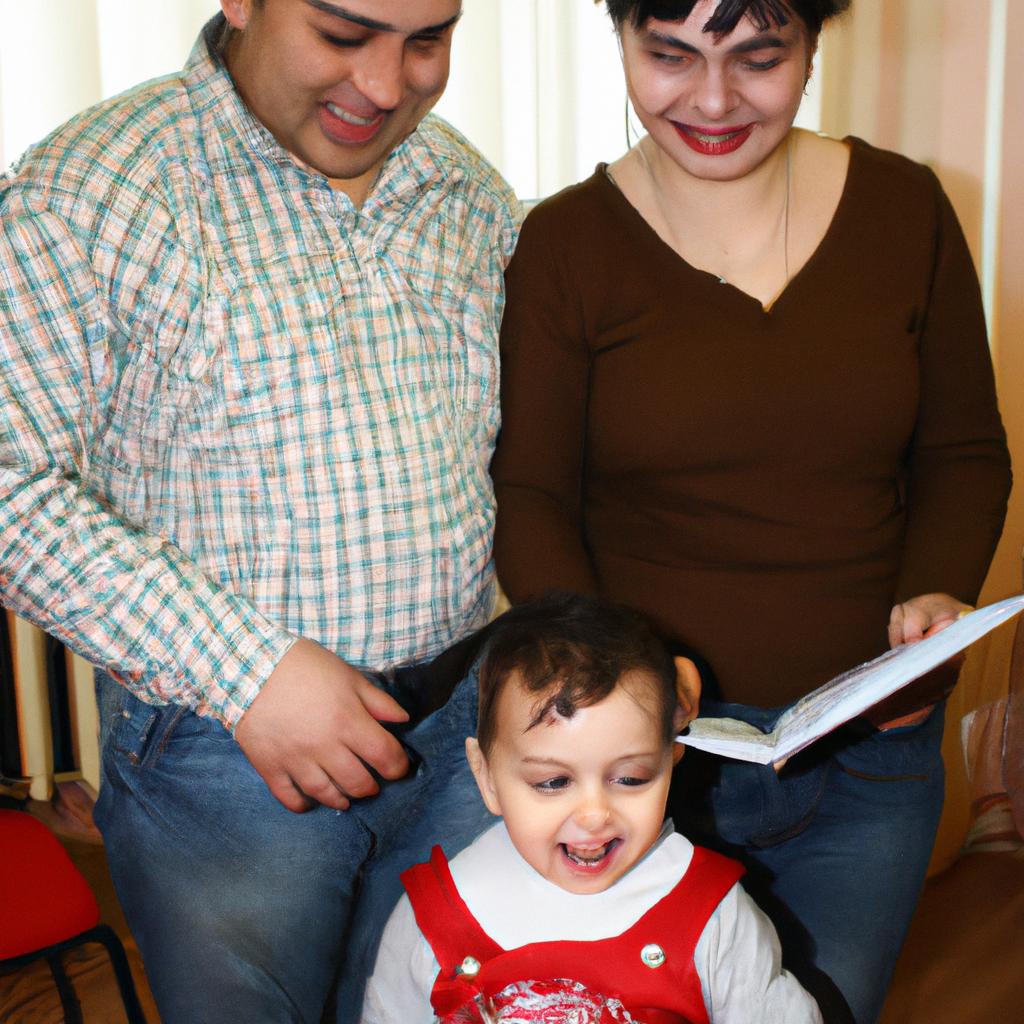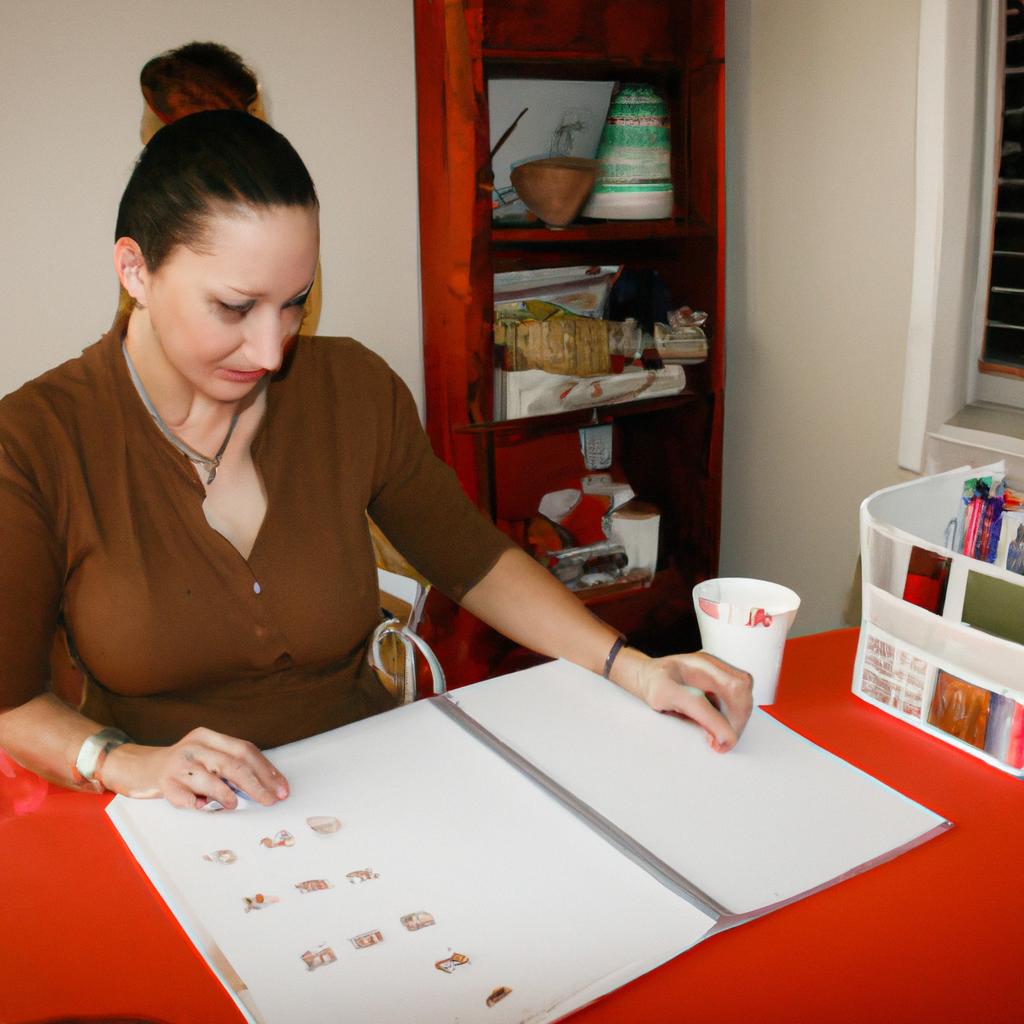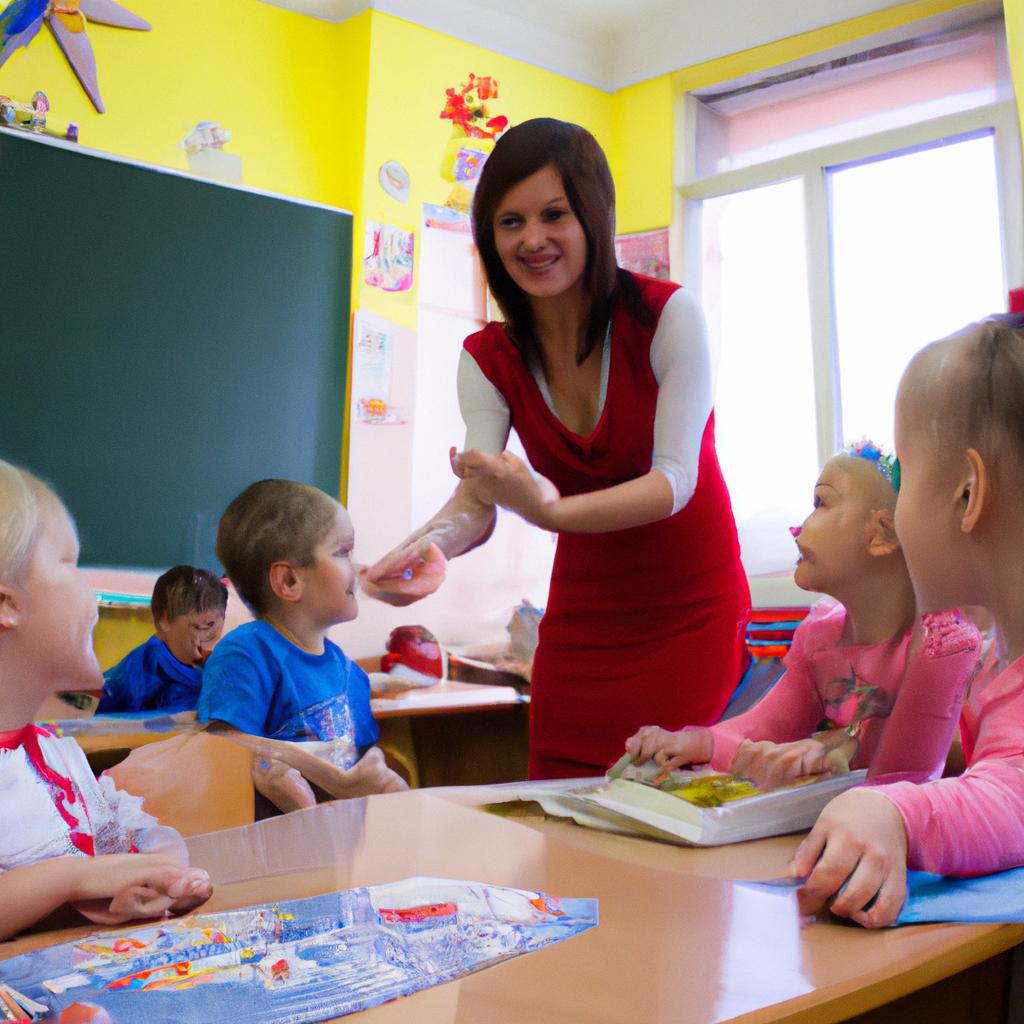In today’s diverse educational landscape, mixed-age classrooms have become increasingly prevalent as a means of fostering social and emotional development among students. This pedagogical approach, rooted in the Montessori philosophy, seeks to create an environment where children of different ages learn alongside one another, cultivating empathy, collaboration, and self-regulation skills. For instance, consider the hypothetical scenario of Alex, a six-year-old student who struggles with anxiety and shyness. In a traditional single-grade classroom setting, Alex may find it challenging to interact with peers or express their emotions effectively. However, by participating in a mixed-age classroom, Alex would have the opportunity to observe older students model positive social behaviors and receive support from both teachers and classmates.
The Montessori perspective emphasizes that mixed-age classrooms provide unique opportunities for children to develop crucial social competencies at their own pace. As younger learners engage with older role models within this inclusive learning environment, they are encouraged to acquire vital life skills such as problem-solving, conflict resolution, and communication techniques. Furthermore, through interacting with peers of varying abilities and experiences, children can cultivate empathy towards others’ perspectives and gain confidence in navigating complex social dynamics. By placing emphasis on cooperative learning rather than competition amongst age groups, mixed-age classrooms foster a sense of community and promote a supportive learning environment where students feel comfortable taking risks, seeking help, and celebrating each other’s successes. This collaborative atmosphere helps to break down barriers and create a culture of inclusivity and acceptance among students.
In addition to social development, mixed-age classrooms also support academic growth. Older students often serve as mentors or tutors for younger ones, reinforcing their own understanding of concepts while helping their peers grasp new material. This peer-to-peer learning not only enhances the older student’s knowledge but also provides the younger student with personalized attention and guidance that may not be possible in a traditional single-grade classroom.
Moreover, mixed-age classrooms allow children to progress academically at their own pace rather than being limited by grade-level expectations. Students can work on tasks and projects that align with their individual abilities and interests, promoting intrinsic motivation and a love for learning. This individualized approach encourages self-directed learning and allows students to develop strong problem-solving skills as they navigate through challenges suited to their level.
It is important to note that implementing mixed-age classrooms requires intentional planning by educators. Teachers must create an environment that supports differentiation, collaboration, and mutual respect among all students. They should provide opportunities for both independent work and group activities that cater to diverse learning styles and abilities.
Overall, mixed-age classrooms offer numerous benefits for social-emotional development and academic growth. By creating inclusive spaces where children of different ages learn together, these classrooms foster empathy, cooperation, independence, and a sense of belonging among students – valuable skills that will serve them well throughout life.
Benefits of mixed-age classrooms in promoting social and emotional development
In the realm of education, the concept of mixed-age classrooms has gained significant attention due to its potential benefits in fostering social and emotional development among students. Rather than grouping children solely based on chronological age, mixed-age classrooms bring together students from different age groups into a single learning environment. This section will explore the advantages of such an approach by examining one specific example.
Case Study: Sarah’s Journey
To illustrate the efficacy of mixed-age classrooms, let us consider the case study of Sarah, a shy 5-year-old who initially struggled with self-confidence and forming connections with peers. Placed in a classroom comprising both younger and older children, Sarah gradually began to show remarkable growth in her social and emotional skills. By observing and interacting with older students, she learned essential empathy and communication techniques that helped her navigate various social situations more effectively.
Benefits:
The benefits of mixed-age classrooms go beyond mere academic achievement; they extend into the realm of social and emotional well-being as well. Here are four key advantages that promote healthy socio-emotional development within this inclusive educational setting:
- Enhanced peer relationships: The presence of diverse age ranges facilitates opportunities for meaningful interactions between students at different stages of their development. Younger children benefit from positive role models provided by older peers, while older ones reinforce their own knowledge by mentoring younger classmates.
- Increased self-esteem: In mixed-age settings, students have ample chances to assume leadership roles or become mentors themselves. Such responsibilities boost their confidence levels as they experience recognition for their achievements and contributions within the supportive classroom community.
- Improved problem-solving skills: Collaborative activities often arise naturally in mixed-age classrooms, urging students to work together towards common goals. Through these experiences, they develop crucial problem-solving abilities as they negotiate conflicts, compromise differing opinions, and find consensus amongst themselves.
- Empathy cultivation: Interacting with peers across various ages fosters empathy as students gain exposure to different perspectives, life experiences, and challenges. They learn to appreciate diversity and develop a greater sense of compassion towards others.
Table: Emotional Benefits in Mixed-Age Classrooms
| Emotional Benefit | Explanation |
|---|---|
| Enhanced peer relationships | Diverse age ranges foster meaningful interactions between students |
| Increased self-esteem | Opportunities for assuming leadership roles boost confidence |
| Improved problem-solving skills | Collaborative activities nurture essential decision-making abilities |
| Empathy cultivation | Exposure to diverse perspectives fosters compassion |
By recognizing the emotional benefits that mixed-age classrooms offer, it becomes evident that the Montessori method plays a crucial role in fostering social and emotional skills among students. The subsequent section will delve into how this educational approach aligns with the principles of mixed-age learning environments.
Role of the Montessori method in fostering social and emotional skills
Building upon the discussed benefits of mixed-age classrooms in promoting social and emotional development, it is important to examine how the Montessori method specifically fosters these essential skills. By providing a nurturing environment that encourages independence, self-discipline, and respect for others, the Montessori approach creates opportunities for children to develop their social and emotional competencies.
Case Study Example: Consider a hypothetical scenario where a five-year-old child named Emma joins a mixed-age classroom consisting of three- to six-year-olds. Through daily interactions with her peers, Emma gradually learns valuable lessons about empathy, conflict resolution, and cooperation. This case study exemplifies the positive impact of mixed-age classrooms on social and emotional growth.
Paragraph 1:
The Montessori method emphasizes the importance of individualized learning experiences within a supportive community setting. In such an environment, children are encouraged to explore at their own pace while engaging in activities that promote autonomy and responsibility. By allowing students from different age groups to interact regularly, mixed-age classrooms provide ample opportunities for older children to serve as mentors or role models for younger ones. This arrangement promotes empathy and compassion among students as they learn from one another’s successes and challenges.
- Encourages cooperative behavior through collaborative projects.
- Fosters understanding of diverse perspectives by exposing children to various ages and abilities.
- Develops patience and tolerance as older children assist younger ones.
- Enhances communication skills through peer-to-peer interactions.
Paragraph 2:
Moreover, research has shown that mixed-age classrooms enhance social-emotional development by cultivating a sense of belongingness within the community. Children develop strong interpersonal relationships built on trust and mutual respect. They learn about fairness, sharing resources, taking turns, negotiating conflicts peacefully, and expressing emotions constructively. These essential life skills lay a foundation for healthy socioemotional development throughout their lives.
| Social Skills Developed | Emotional Skills Developed |
|---|---|
| Empathy | Self-regulation |
| Conflict resolution | Emotional awareness |
| Cooperation | Resilience |
Paragraph 3:
In light of these findings, it is evident that the Montessori method plays an instrumental role in fostering social and emotional skills through mixed-age classrooms. By nurturing a sense of belongingness, promoting empathy and cooperation, and providing opportunities for peer learning, this educational approach equips children with essential tools to navigate their social interactions successfully. In the subsequent section, we will examine the importance of peer learning and collaboration within mixed-age classrooms.
Understanding how the Montessori method fosters social and emotional development allows us to explore further the significance of peer learning and collaboration within mixed-age classrooms
Importance of peer learning and collaboration in mixed-age classrooms
Building upon the role of the Montessori method in fostering social and emotional skills, this section explores the importance of peer learning and collaboration within mixed-age classrooms. By providing a diverse range of interactions and opportunities for growth, these environments offer unique advantages for social development.
Peer learning and collaboration in mixed-age classrooms allow students to engage with their peers in meaningful ways. For instance, imagine a scenario where an older student mentors a younger classmate struggling with math concepts. This interaction not only enhances the mentor’s understanding but also promotes empathy and patience towards others. Through such exchanges, children learn how to navigate different personalities, communicate effectively, resolve conflicts amicably, and develop teamwork skills – all vital aspects of social and emotional development.
To further emphasize the significance of peer learning and collaboration in mixed-age classrooms, consider the following list:
- Increased sense of belonging: Students feel valued when they contribute their knowledge or experiences to help others.
- Enhanced self-confidence: As learners become more proficient in a subject area, they gain confidence by sharing their expertise with peers.
- Improved communication skills: Collaborative activities necessitate effective communication through verbal expressions, active listening, and non-verbal cues.
- Strengthened problem-solving abilities: Working together encourages critical thinking as students tackle challenges collectively.
| Benefits of Peer Learning | Examples |
|---|---|
| Cooperative mindset | Engaging in group projects where students work together towards a common goal |
| Empathy development | Pairing older students with younger ones for mentoring partnerships |
| Enhanced creativity | Encouraging brainstorming sessions that foster innovative ideas from various perspectives |
| Respectful relationships | Promoting inclusive practices that value each individual’s contributions |
In summary, peer learning and collaboration in mixed-age classrooms create an environment conducive to holistic social and emotional development. These interactions provide numerous benefits such as increased sense of belongingness, enhanced self-confidence, improved communication skills, and strengthened problem-solving abilities. By embracing peer learning in the Montessori approach, students develop essential life skills that extend beyond academic achievements.
With an understanding of the significance of peer learning and collaboration, let us now explore strategies for creating a supportive and inclusive environment in mixed-age classrooms…
Strategies for creating a supportive and inclusive environment in mixed-age classrooms
Building upon the importance of peer learning and collaboration, creating a supportive and inclusive environment is crucial for promoting social and emotional development in mixed-age classrooms. By fostering positive relationships among students of different ages, educators can facilitate meaningful interactions that enhance empathy, cooperation, and self-regulation skills. An illustrative example highlighting the effectiveness of such practices is the case study conducted at Maplewood Montessori School.
Example:
At Maplewood Montessori School, a group of children aged 3 to 6 years old were placed together in a mixed-age classroom. The teacher intentionally designed activities that encouraged cross-age interaction and collaboration. For instance, during morning circle time, each child was assigned an older buddy who would assist them with daily tasks like putting on their shoes or choosing materials for work. This practice not only created opportunities for younger students to seek guidance but also fostered a sense of responsibility among their older counterparts.
To further support social and emotional growth within this diverse learning community, several strategies have been implemented:
- Establishing clear expectations: Clearly defining behavioral expectations promotes a sense of structure and safety within the classroom setting.
- Encouraging cooperative problem-solving: Activities that require students to work together towards common goals foster teamwork skills while allowing them to explore various perspectives.
- Practicing active listening: Teaching children how to actively listen to others’ ideas and emotions enhances their ability to empathize and respond appropriately.
- Promoting conflict resolution: Providing guidance on resolving conflicts respectfully helps students develop vital interpersonal skills necessary for navigating challenges amicably.
Table – Strategies for Supporting Social and Emotional Development:
| Strategy | Description |
|---|---|
| Establishing clear expectations | Clearly outline behavior guidelines to provide structure and promote feelings of safety within the classroom |
| Encouraging cooperative problem-solving | Engage students in activities that require collaboration and problem-solving skills, fostering teamwork and empathy |
| Practicing active listening | Teach children the importance of actively listening to others’ ideas and emotions, enhancing their ability to empathize and respond appropriately |
| Promoting conflict resolution | Provide guidance on resolving conflicts respectfully, helping students develop interpersonal skills necessary for navigating challenges amicably |
By implementing these strategies and creating an environment where social and emotional development is valued, mixed-age classrooms can positively impact children’s overall well-being. The combination of diverse perspectives, mutual support, and collaborative learning experiences helps foster a strong sense of belonging and self-confidence among students.
Transition into the subsequent section:
Understanding the impact of mixed-age classrooms on children’s self-esteem and confidence further enhances our comprehension of how this educational approach contributes to holistic development.
Impact of mixed-age classrooms on children’s self-esteem and confidence
By examining empirical evidence and incorporating Montessori perspectives, we can gain a deeper understanding of how these environments foster social and emotional development.
The benefits of mixed-age classrooms are evident when considering their positive influence on children’s self-esteem and confidence. For instance, let us consider a hypothetical scenario where a shy five-year-old child named Emily enters a classroom with older peers. Initially hesitant to engage with others, Emily observes her classmates as they work collaboratively on projects. Over time, she begins to participate actively, gradually gaining confidence in her abilities. This example highlights one way in which mixed-age classrooms encourage personal growth by providing opportunities for younger students to observe and learn from their more experienced counterparts.
To further illustrate the impact of mixed-age classrooms on self-esteem and confidence, several key factors should be considered:
- Peer mentoring: Older students often serve as mentors for their younger peers, offering guidance and support that fosters a sense of belonging.
- Positive role models: Younger students benefit from observing older peers’ behavior, learning important social skills such as conflict resolution and empathy.
- Individualized pace: Mixed-age classrooms allow children to progress at their own pace without feeling pressured or limited by age-based expectations.
- Collaborative learning: Working together across ages promotes cooperation and helps build trust among students.
Emotional response bullet points:
- Increased sense of belonging
- Improved self-confidence
- Enhanced interpersonal skills
- Development of empathy
In addition to these factors, research shows that mixed-age classrooms provide numerous advantages for social-emotional development. The table below summarizes some notable findings:
| Advantages of Mixed-Age Classrooms |
|---|
| Encourages peer collaboration |
| Promotes inclusivity |
| Fosters leadership qualities |
| Enhances social problem-solving skills |
In conclusion, mixed-age classrooms have a significant impact on children’s self-esteem and confidence. By fostering peer mentoring, providing positive role models, accommodating individualized learning paces, and promoting collaborative work, these environments facilitate the development of crucial social-emotional skills. Building upon this understanding, the subsequent section will address challenges that arise in managing social dynamics within mixed-age classrooms and explore potential solutions.
Now turning our attention to challenges and potential solutions for managing social dynamics in mixed-age classrooms…
Challenges and potential solutions for managing social dynamics in mixed-age classrooms
Transitioning from the impact of mixed-age classrooms on children’s self-esteem and confidence, it is important to explore the challenges that can arise in managing social dynamics within these settings. While mixed-age classrooms have numerous benefits for social and emotional development, they also present unique hurdles that educators must address. By understanding these challenges and implementing appropriate strategies, teachers can create a harmonious environment where students thrive.
One challenge in mixed-age classrooms is the potential for age-related power imbalances among students. Younger children may look up to their older peers as role models or sources of guidance, while older students might assume leadership roles. However, this dynamic could unintentionally result in younger children feeling inferior or intimidated, while older ones may face added pressure to perform well academically or socially. For example, in a hypothetical case study conducted at a Montessori school, it was observed that some younger students hesitated to express themselves freely due to fear of judgment from their older classmates.
To address such challenges effectively, educators should consider adopting strategies that promote inclusivity and equal opportunities for all students:
- Encouraging cooperative learning experiences: Implementing group activities that foster collaboration between different ages allows students to learn from each other’s strengths and perspectives.
- Facilitating peer mentoring relationships: Pairing older students with younger ones for certain tasks or projects can cultivate an atmosphere of mutual support and empowerment.
- Promoting empathy and respect: Teaching children about empathy and fostering a culture of respect helps them understand the importance of treating others kindly regardless of age differences.
- Establishing clear expectations: Setting guidelines regarding behavior and interactions ensures that all students feel safe and respected within the classroom community.
By incorporating these strategies into daily classroom practices, educators can mitigate potential issues arising from varying ages within mixed-age classrooms.
| Age-related Power Imbalances | Strategies for Inclusivity |
|---|---|
| Older students assuming leadership roles | Encourage cooperative learning experiences |
| Younger students feeling inferior | Facilitate peer mentoring relationships |
| Pressure on older students to perform well academically or socially | Promote empathy and respect |
| Fear of judgment from older classmates | Establish clear expectations |
In conclusion, while mixed-age classrooms offer numerous benefits for social and emotional development, they also present challenges related to age-related power dynamics. By implementing strategies that promote inclusivity and equal opportunities, educators can create a supportive environment where all students feel valued and empowered. Through fostering collaboration, peer mentoring, empathy, and establishing clear guidelines, teachers can navigate the intricacies of managing social dynamics within mixed-age classrooms effectively.

